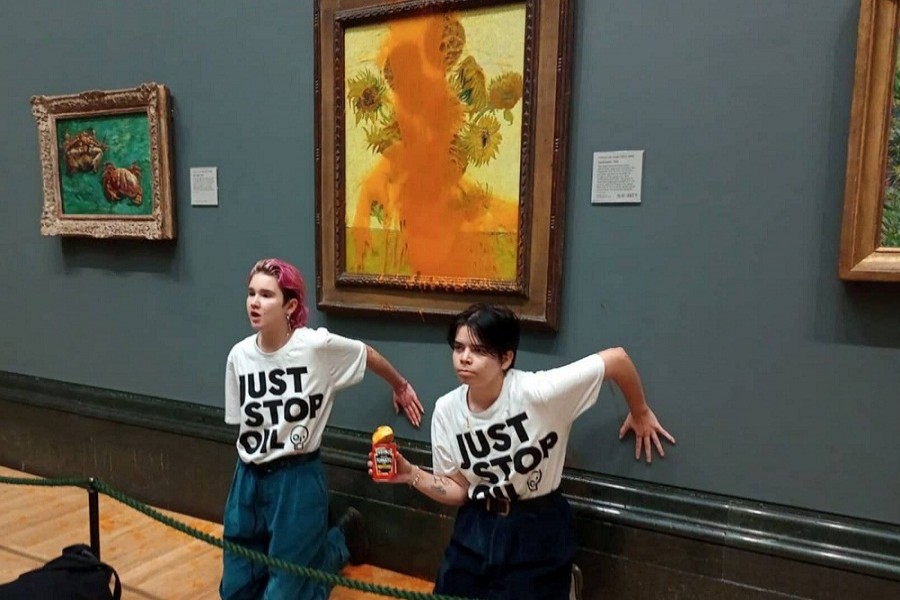On 14th October, climate change activists threw tomato soup at Van Gogh's sunflowers painting. Then, they proceeded to glue themselves against the wall in an attempt to raise awareness about the ongoing climate crisis.
While climate change is an issue that deserves more media coverage and attention, whether their stunt actually managed to serve that purpose has been a trending debate online.
They received the attention for sure, but not for what they wanted. For the most part, they received major backlash for their actions. Even putting aside the hateful internet discourse, they still faced legal charges and got arrested for criminal damage and aggravated trespass.
This certainly is not the first time an incident like this has occurred; similar cases have occurred just this year. On 29th May, a man disguised as an older woman smeared cake on the Mona Lisa at The Louvre in Paris, climate activists glued themselves against Sandro Botticelli's Primavera at Galleria Degli Uffizi in Florence on 22nd July, two other protesters also glueing themselves to the protective covering of a Picasso print at The National Gallery of Victoria on 9th October.
Other artworks that have been targeted are Raphael and Monet in Germany and Vermeer in the Netherlands.
You will notice there is a pattern. They all glue themselves to the artwork. That is because it allows them more time to get their point across; security cannot escort them back immediately if they can somehow stick themselves to that spot.
The overall setting as well plays a part in raising the shock value. The serene peacefulness of a museum suddenly disrupted by chaos makes the protest more impactful and forces people to confront the issue head-on.
Although most people think these incidents took place because these people were attention-seeking individuals, protests in museums aren't totally out of the ordinary.
The first protest in an art museum dates back to 1914. A Canadian woman, Mary Richardson, advocating for voting rights for women, had slashed the 17th-century painting 'Rokeby Venus' to protest the arrest of another protester and reprimand the patriarchal depiction. Activists followed her lead in the years to come.
While some people see art galleries as escapism from the real world, many fail to realise that art is still very much a part of the real world. Classic pieces are products of a certain period, a time that existed in the world we are currently living in.
To quote German artist Hans Haacke in a 2008 interview, "What concerned me at the time and what is still important for me today is that people coming into a gallery, a museum, or another art exhibition venue, are reminded that these art spaces are not a world separate from the rest of the world. The world of art is not a world apart."
This is something that protesters seem to preach. Interpreting art by putting their modern-day narratives into it and raising awareness of the issues in our day and age.
Instead of looking at art just for viewing pleasure, it may be more vital if we stop to think about what art could mean and all the history behind it, as well as relate it to problems of our contemporary society.
Using art as an educational resource rather than simply labelling it as a pretty and priceless artefact you can own will only raise the value that these classic pieces already have. Aesthetic paintings of landscapes and flower gardens are not just there for us to appreciate their beauty; they have become a reminder of how this natural beauty won't last long if the earth continues to warm.
Unfortunately, despite all of this commotion, it had little to no impact on the people at the forefront of this environmental crisis. None of the major oil companies or organisations has really paid any heed to all these protests, and they are yet to take measures to shift to more eco-friendly alternatives.
On the other hand, because the protests have gained so much attention online, the people who did their research are now more educated about the climate crisis. So it did raise awareness, and people who did not know about this issue now do. It may not seem like much, but it is still one step forward.


